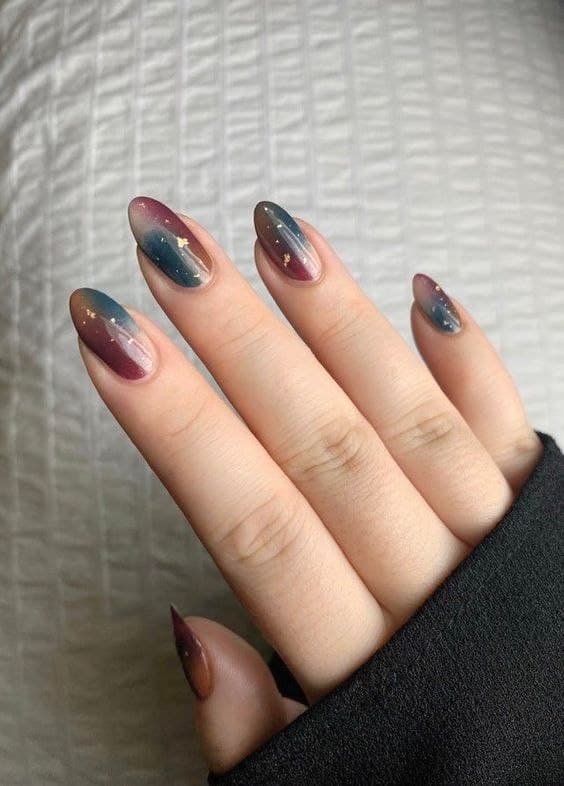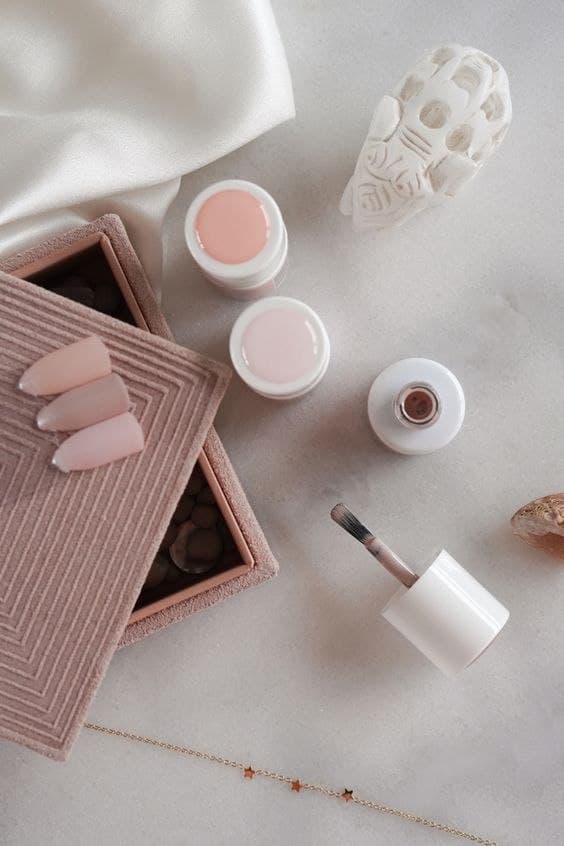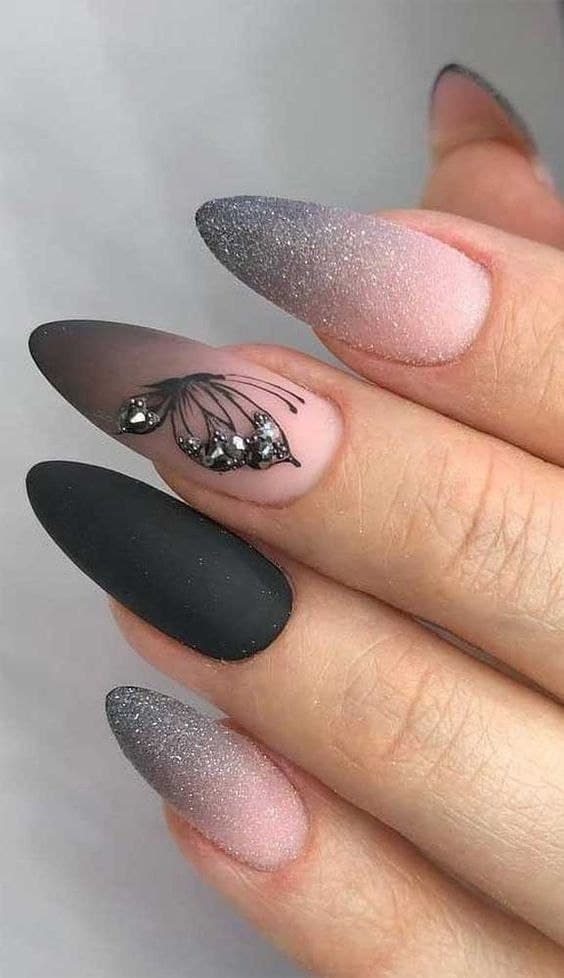In ten years, those who do manicures used to think that manicures lasted until their next visit, but that wasn’t always the case. Here’s an account of an American dentist’s invention that completely transformed nail services, and a bit about how gel lacquer manufacturers will take their business sustainably into the very near future.

The history of Gail’s Nails
The decade was a period of new technological progress in the cosmetics industry: highlighters, sculptors, a dozen new form factors of brow products, matte lipsticks and much more became widely available. We can relate this to the global economic crisis of 2008 and the lipstick index (an indicator reflecting the dependence of demand for cosmetics on the economic downturn): the deeper the crisis, the more cosmetics sales increase, because when consumers can’t afford a bag, they buy lipsticks.
The nail industry also demanded fresh ideas and new technological solutions. After the boom in French manicures and nail art in the noughties, consumers wanted something practical that would make their lives easier – gel nail polishes were such a phenomenon.
Stuart Nordstrom came up with the idea. In the past, the future founder of Creative Nail Design (CND) worked as an ordinary dentist. In 1978, a manicurist came to his practice and noticed that the ingredients for a temporary filling smelled exactly like the nail extensions he was using. Nail extensions had long existed in those years (and had also been invented by a dentist), so Nordstrom focused on the idea of a colored coating that would last forever without cracking or chipping. From the concept to its full implementation it took Nordstrom almost thirty years of development, and only in 2010 the first product under the brand name Shellac went on sale.
Gel-lac is a hybrid of ordinary nail polish and gel for lengthening, but to be more specific – a very pigmented gel that is finely and tenaciously applied to the nail plate, dries in a special UV-lamp and so easily can’t be removed by ordinary liquid nail polish remover.
Gel-lacquers are divided into three types: working on a one-phase system (just polish, only gel), two-phase (the system consists of the lacquer itself and topcoat) and three-phase, the most stable, consisting of three means – the base, color and topcoat. Now salons are actively using all three, depending on the brand with which the salon operates.
How has the nails industry changed
Brands that specialize in products for the nails, to master the new category was, obviously, easier. Essie, Orly, Butter London, OPI, China Glaze, and many others now have gel lacquers.
As for the other players, things are more complicated. There is a division into professional and amateur in all cosmetic categories. For example, caring cosmetics have a marketing category “cosmeceuticals” (Skinceuticals, HolyLand), and decorative cosmetics have “cosmetics for makeup artists” (MAC, Manly Pro). From the “regular”, these products differ mainly in marketing positioning and target audience, but that does not mean that only professionals buy these products, they are quite well-known and in demand beyond their target audience. With gel-lacquers more complicated: they need a lamp and a machine for manicure – not everyone will want to buy them; many have found it easier and cheaper to do a manicure in a salon or shopping mall. Therefore, professional brands like CND usually prefer to cooperate with salons and not to stand on the shelves of retailers in general or not to give them for the distribution of products to be used in the salons – it is unprofitable. And salons, in turn, are more interested in buying products with “professional” positioning.

But do not respond to a new trend the rest of the market could not, so very soon on the shelves appeared all sorts of options “gel varnishes without gel. They can be identified by the names “gel effect” “gel formula” “gel resistance” and so on. In fact, these are the usual lacquers, but more resistant and glossy. It isn’t necessary to dry them in a lamp and they are washed off with a regular nail polish remover. Thus, the new trend has not captured the entire market but has seriously stimulated its development.
Nails market in numbers
In 2015, the global nail polish market was valued at $6.89 billion, of which $59.31 million were gel polishes. By 2019, those numbers reached $9.84 billion and $49 million, respectively. If the increase in demand for conventional nail coatings is generally understandable and predictable, why has the gel polish category sagged?
This can be explained by cheaper production. In the first half of 2010, this product was available only to major brands with great technical capabilities, so they could set a fairly high price for their products, and later learned to reproduce the formula companies from the budget segment.
Many craftsmen, especially beginners, for example, prefer to order lacquers on AliExpress and other similar platforms. There, one bottle can be found for $3. Also, Kodi varnishes, popular with masters, are given away online for an average of $7 (retail price), while CND varnishes are on average almost twice as expensive, and in the early years of sales, their prices were even higher.

In addition, the premium segment is growing at a steady pace. In developed countries, there are more and more customers who have the desire and opportunity to receive manicure services in a higher class. For example, Jin Soon, Smith & Cult, Christina Fitzgerald, Deborah Lippmann polishes are popular in the more expensive salons, these brands do not have gel-lacquers for various reasons. Some are reluctant to develop new formulas for economic reasons, others for environmental reasons, and still others want to remain niche.
What’s next in nails market
Analysts expect the global nail polish market to reach $15.55 billion by 2024, with an average annual growth rate of 9.5% in this category. This increase in demand is attributed to the growing popularity of nail design among young audiences. The gel nail polish category is also projected to show an average annual growth rate of 3.5% by 2025 to reach $56 million, assuming we all don’t quarantine ourselves for another year – 2020 has already hit this market hard enough.
Two trends can be outlined so far. First, in quarantine, consumers have faced the inability to renew their manicures. And since the world is still wary of the future, everyone is waiting for the industry’s simple solutions: for example, a special liquid, which wouldn’t be toxic, but at least would facilitate the removal of gel varnish. Until that does not exist, sales of conventional varnishes will grow.

The second point – environmental friendliness. Most of the currently available on the market gel lacquers are made with petrochemical products (mostly methacrylate), which is safe for the consumer, but not in line with the general trend of environmentally friendly production. There is an emerging demand for varnishes made of organic and biomaterials either naturally derived or synthesized according to the principle of sustainability.
According to the analysts of the research company Technavio, the increased attention to gel lacquers from biomaterials will have a positive impact on the market and will contribute significantly to its growth in the next five years.
Scientists are now investigating the potential of nitrocellulose, spirooxazine, aliphatic urethane oligomers, and soluble resin. While they show good results and can potentially replace methacrylate – for all characteristics (brilliance, durability, hardness), they do not fall behind “harmful” analogs, but the cost of such lacquers will certainly be more expensive. Nitrocellulose is already used by Fedua luxury Italians, who promise customers coating resistance of 10 days – far from the performance of the classic three-step system CND, with which the coating will last until the nails grow out, but not bad too.





